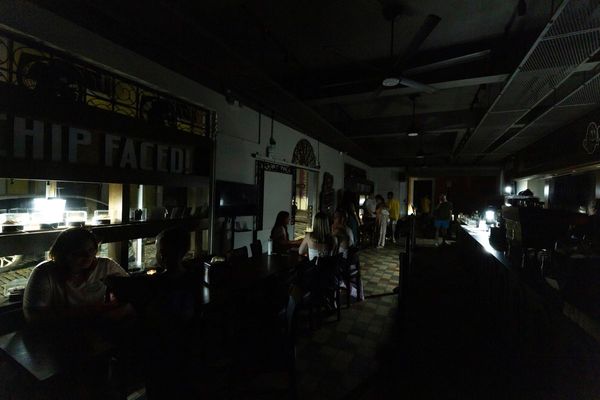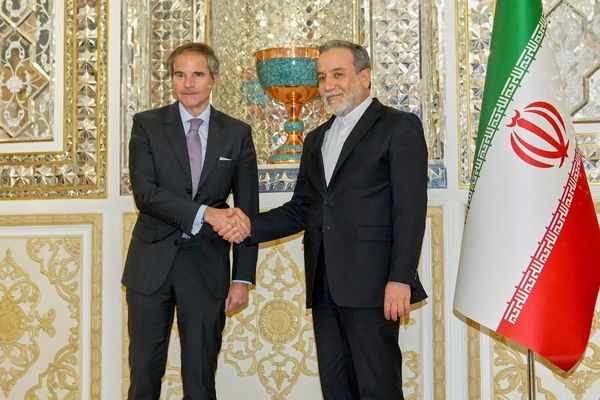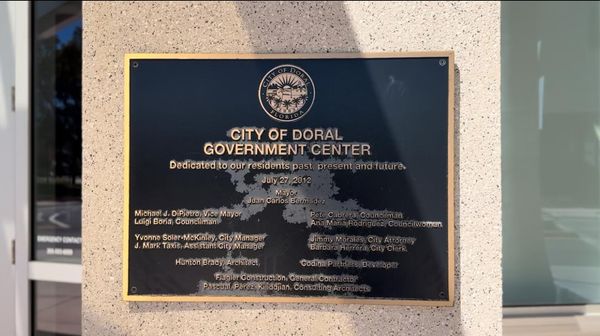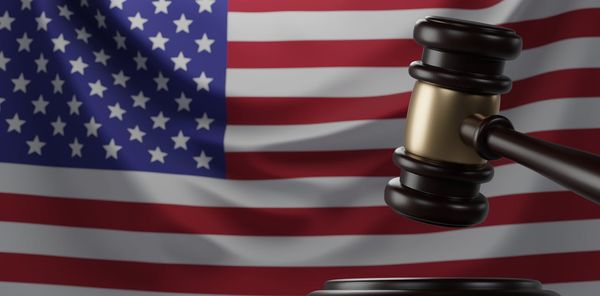
In the middle of the night, four young Aboriginal men pitched a beach umbrella on the lawns opposite Parliament House and sat down. When dawn broke on 26 January 1972, a police officer came over to ask how long they intended to stay.
“Until we get land rights,” one of the four, Billy Craigie, told the officer.
Commissioner Gibson apparently laughed and said, “that might be a long time”.
Craigie replied: “Well, we’ll be here a long time then.”
It’s 50 years today since the Aboriginal tent embassy was born from that act of defiance. And its demands remain current.

Above: Bobbi Sykes (with Gordon Briscoe) addresses a protest at the Aboriginal Tent Embassy, Canberra, July 1972. Below: The Aboriginal Tent Embassy, Parliament House in 1972. Images: Ken Whittington/National Archives Australia

The embassy has formed and reformed over the years before becoming a permanent presence in 1992, and has remained a place of Aboriginal resistance in direct line of sight of the halls of power in Canberra.
The name “tent embassy” was itself a statement that Aboriginal people were living in substandard conditions, treated “like aliens in their own land”, as Dr Gary Foley says in his 2014 book The Aboriginal Tent Embassy: Sovereignty, Black Power, Land Rights and the State.

Paul Coe (on left) addresses Gough Whitlam at the Aboriginal Tent Embassy, Canberra, 1972. To Whitlam’s right, standing, is journalist John Newfong. Image: State Library of New South Wales/Search Foundation
“That it has endured for decades as a potent symbol rejecting the hypocrisy, deceit and duplicity by successive Australian governments is a testament to the refusal of large numbers of Aboriginal people to concede defeat in a 200-year struggle for justice,” Foley writes.
Billy Craigie’s altercation with the police – the first of many on that site – is recalled by Michael Anderson who, with Tony Coorey and Bertie Williams, made up the original four under the umbrella that morning.

Michael Ghillar Anderson. Image: Juno Gemes
Anderson says the impact of the embassy was “dynamite”.
“In terms of the media, because they really had no idea, this was the first time they ever saw Aboriginal people confront the establishment on anything,” he says. “It made a significant difference.
“The embassy was striking a chord that just seemed to be the right time. We had just had Woodstock, the Vietnam war. So it was all about change, and changing ideas and changing conceptions. I think we hit the right chord at the right time. And we brought everything to the attention of the world. I think [it was] very successful from that point of view.”

Roxley Foley at the Crossroads Canberra. Image: Juno Gemes
The site means many things to many Aboriginal people. Roxley Foley lived there as caretaker for three years from 2016 to 2019 (the “Abbott years”, he says, noting they saw a few prime ministers “in and out of the place” in that time). Foley remembers the embassy as a place of pilgrimage.
“For a lot of my time out there it served so many different roles, not only being a place for education and confronting the government. It was very much a place that was holding our mob whenever they came to Canberra and they couldn’t get access to things,” Foley says.

ACT police officers remove tents and bedding from the Aboriginal tent embassy on the lawns of Parliament House in Canberra, 20 July 1972. Image: Fairfax Media/Getty Images
“It’s a place where people looked for networking into housing, into the health services, just to be listened to. The amount of old people we had travelling to that space as almost a pilgrimage, to heal something in themselves.”
The next big milestone comes on 20 July, the anniversary of the day in 1972 when the federal government amended the law to allow police to march in and forcibly dismantle the embassy. Until then, there had been no actual prohibition on camping on the parliamentary lawns and for six months as the embassy grew, it caused the McMahon government intense embarrassment here and overseas.
There was a second raid a few days later, by which time the number of embassy supporters had swelled – and continued to rise to more than 2,000 by 31 July.
Anderson remembers the attempted eviction as a “bloody battle”.
“I’ve been in some brawls in my time … but it was nothing like what happened back then. The record shows that there were about 36 policemen went to hospital and 18 of us went to jail. And so it was a bloody battle. It was one of the roughest I’ve been involved in.”

The incident is depicted in the seminal 1972 film, Ningla A-na, which is being screened on site for the 50th anniversary this week.
For now though, the Ngambri–Ngunnawal elder Matilda House says it is time to celebrate.
“Our sovereignty is still alive and well,” House says. “[The embassy] is the continuation of how Aboriginal people have never forgotten, and the respect and the legacy [we leave] for the generations that are coming through.”
Foley agrees.
“I think the important thing is not to focus just on the embassy, but 50 years of resistance. And furthermore, 233 years of resistance.”







